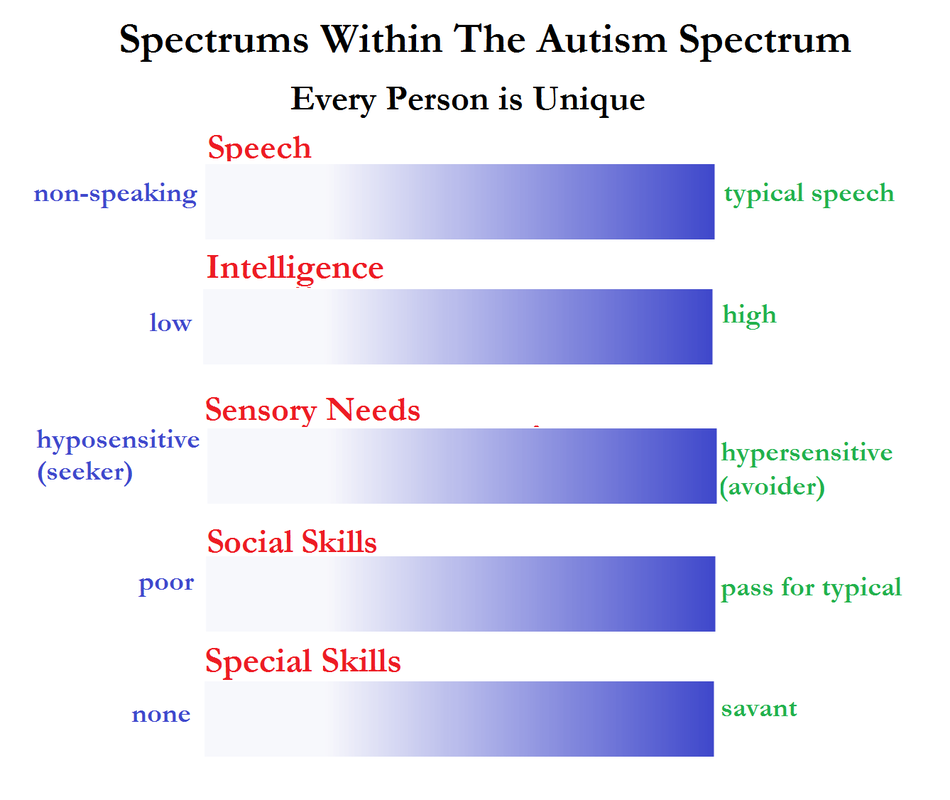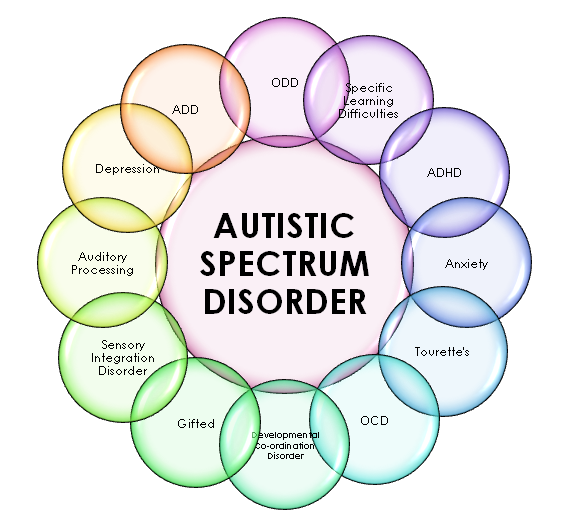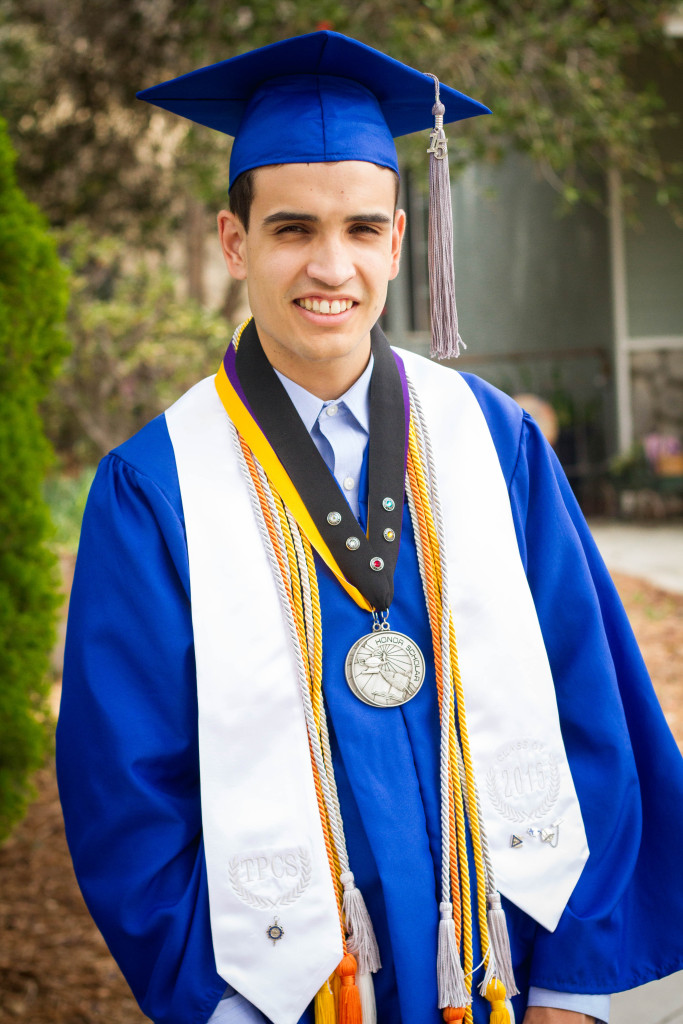Guest post by Tracy Kedar
I have been asked many times by parents how to develop resources to support their children with autism who communicate by typing in order to access a regular education, or how to find supportive agencies or how to create other services where they live. I wish there was an easy answer. Each resource we have out here took legwork and advocacy work by someone, as I’m sure so many of you have already experienced and accomplished, and we have a long way to go! Based on the kinds of questions I often receive, what I can offer are some tips that hopefully will help parents in developing resources where they live.
School:
The general education system is still not set up for typers. By and large, unless you encounter an extremely rare and open-minded individual in your school, or others have blazed the trail before you, you will virtually never walk into a school that is familiar with autism or ready to integrate autistic students into general education classes Thus, parents are, as always, thrust into the role of advocate for their child and become de facto outreach educators regarding autism to the schools. Since so many special educators have been taught that students with autism have low cognition, parents of autistic children who have broken through the communication barrier and who are trying to get their children into general education, must come to IEP meetings armed with evidence of their child’s ability. Often times those early meetings are emotionally challenging for parents because panels may be biased or even hostile. However, films of their child typing, reports and assessments from private, preferably school-district-recognized, augmentative communication specialists, psychologists, and others, which show their child’s true capacity, may help.
Beyond this, parents may need to be ready to explain that their child has a legal right to be educated, according to federal law, in the least restrictive environment, despite communicating in a different modality and sometimes displaying odd behavior. Since many people have never even heard that a nonverbal autistic person can communicate by typing, parents can help the IEP team by reassuring them that with a trained aide for behavioral support and as a communication partner, autistic people have successfully been integrated into general education and have done well.
With luck, there will be in attendance at the IEP meeting someone from the school who recognizes that the child is truly communicating and who consequently recommends allowing the child to enter regular classes, but this may not be the case. If it seems necessary, parents may want to invite independent professionals to the IEP as well, such as augmentative communication specialists, educational psychologists, and so on, who can help advocate on behalf of your child’s abilities. Though there may be no one in your area specializing in, or even familiar with testing autistic kids who use typing to communicate, just finding someone open-minded may be good enough.
From our own experience, when Ido was young and I was trying to get him out of autism class, I searched for an educational psychologist who was willing to let him be tested while he answered questions via letter board. I found someone who was willing to try. She carefully observed throughout the testing to make sure he was communicating without being manipulated or prompted, however, she had no prior experience testing a child who communicated in this modality. Other parents looking for someone to do an assessment are eager to hear who can do a fair or adequate job and word may spread among parents that this person is capable of testing a nonverbal typer.
Should a school refuse to allow an autistic student to be integrated in spite of educational psychological evaluations and films demonstrating ability and aptitude at age appropriate level, then in some instances parents may be compelled to seek additional support. It is generally better to not have legal professionals (lawyers, paralegals) in the room in the introductory meetings since at that early stage you are trying to educate school personnel and forge a partnership. However, if you determine that it is necessary, it may be helpful to convey that you are consulting with a legal professional and are aware of your child’s legal rights. A lawyer’s presence may be useful in future meetings but is certainly not the place to start as teamwork and a non-adversarial relationship is always best, if possible.
Once a child is out of the autism class and mainstreamed, the student often finds the academics to be an easier hurdle than the learning to sit still and control his body, emotions and impulses all day. Because these are self-control skills, many students begin mainstreaming gradually, perhaps leaving an autism classroom for only a few periods a day until the self-control improves. For example, in Ido’s middle school there was a self-contained autism class where he sat when not in general education classes, though he did independent study there for the other academic classes he was missing. His integration began gradually. In 6th grade he went only to two general education classes, math and science, and as he learned how to function in a regular class he was able to last longer and longer. By 7th grade he was mainstreamed for three classes and by 8th grade the school recommended that he be on a full general education schedule, which he maintained throughout high school.
Another strategy we found useful was to hire a private tutor to work on grade level material not taught in the autism class before Ido was mainstreamed into general education so that he could get used to do doing regular coursework. He was sitting in the remedial autism class at school all day, but we hired a graduate student in education (not special education) with no prior exposure to autism, whose lesson plans no doubt helped ready Ido for general education. Another advantage is that each of these people, formerly unfamiliar with nonverbal autism and typing to communicate, becomes part of a wider network of support and may in turn provide support to other parents and students.
It is important to note that for most of the typers we know, they didn’t walk into a school that had a program ready to mainstream an autistic student. Since Ido was the first mainstreamed, nonverbal autistic student in every school he attended, this was a completely new experience for teachers and administrators. It is important to know that individual people can make a huge difference. We were helped enormously in middle school by an open-minded administrator, an assistant principal, who was willing to work with us and be supportive to Ido in the school setting. As he told me, “I always just assumed he was smart and just communicated in a different way.” By presuming competence he helped forge a path for success. This was a pleasant surprise. We saw how, by his lead, he influenced others in the school to be receptive to having a student with autism in regular classes.
To help smooth out potential obstacles, prior to the beginning of the school year I met with the administrators to explain who Ido was, how he communicated, his abilities and challenges, and I did the same with all of his teachers after contacting them by email. Ido came to these introductions and introduced himself to the teachers. This is an essential step. Many teachers have never met a person with autism before. They may know nothing about autism. They have huge classes and they already feel overwhelmed and harried, so they need to know that they have someone to bring their questions to, whether it’s the parent, aide, administrator or inclusion teacher. With a good collaborative relationship, supportive administrators can help place the child with teachers they know will be the most open and capable. Many teachers rise to the challenge admirably and really embrace educating the student with autism. They are great gifts to our children. Other teachers accept the presence of our kids with no special passion for reaching out. No problem. They educate them and accept them as they do any other student. Each of these teachers becomes a resource for those students with autism who follow.
There are, however, some teachers who are a terrible fit. They may resent the child’s presence, do not know how to deal with autistic behavior including disruptive noises, outbursts or poor impulse control, be poor teachers in general, or they may exhibit hostile skepticism. In certain instances, finding a different teacher may be warranted. Teachers should be encouraged to observe the child communicating and answering questions to put their mind at ease and to reassure them that the student is doing his own work. From our experience, the more independently the child is able to communicate, the more receptive the response. In our experience, the majority of teachers I met were cooperative and some were outstanding. .However, in spite of all your efforts, you may still encounter people in the schools who are less open-minded, or who are convinced a nonverbal, autistic child does not belong in general education. It is never easy being a pioneer, and unfortunately, both parents and the student have to be ready for these challenges and for the difficult people who make the process tougher, whether teacher or administrator.
Parents may find that certain systems are unfixable. When Ido started high school, after a successful middle school experience, he initially went to our local high school hoping to continue his positive experience. This school proved to be a bad fit. A few administrators created a hostile climate for disabled students. Since it is hard enough having autism, no student deserves to be bullied by administrators and made to feel unwelcome at school, in addition to their everyday challenges. I concluded that the administrators of this school were not reasonable or compassionate people who were willing to work with me, but rather, were obstructionist and mean-spirited. I realized that because of this, the environment could not be changed for the better for Ido. I felt that the hostile climate was sufficiently bad that I had to remove him from the school and find another high school with a more welcoming attitude that would be willing to enroll him midyear.
The second nearby high school I found did not have any experience mainstreaming autistic students into the general education classes. Ido was the first. But they had a different attitude of, “let’s try,” “let’s make it work,” and significantly, they had respect for the student. This enabled him to thrive. What happens without planning, then, is that word of mouth spreads among parents to avoid the first school and to look into the second, and so perhaps more typers enroll in the second school and none into the first. But, it is not as if a program of integration, training, or special services for the students with autism existed or exists in that school. Rather, it is a school with some kind people willing to give a student with autism who types a chance to be educated and it becomes an option for parents looking for resources.
One friend of mine was having terrible experiences with a teacher/administrator in her son’s elementary school. The mom is a strong advocate but it became clear that she was dealing with a closed-system, much like Ido’s first high school, which didn’t want things to work out. Staying in schools like this is actually harmful to our kids. She was struggling to cooperate with an individual who had strong negative biases toward her son’s abilities and who would not, and possibly could not, change. As painful as it may be to see people who reject or underestimate our children, sometimes we simply have to recognize a hostile system and not continue to bang our heads against the wall trying to fix things. It becomes essential in these circumstances to look for greener pastures elsewhere. After changing schools, this little boy is now thriving in his new school where he is fully integrated and welcomed. Once again, this life-changing experience was made possible simply thanks to a few open-minded individuals in the new school who his mom reached out to and who were willing to listen and learn and the negative experience was shaped by one powerful individual in the first school.
The bottom line is that a successful general education school experience is created one teacher, one counselor, and one administrator at a time and parents must reach out to all of them. One of our most successful collaborative relationships was with a teacher who initially was skeptical of Ido’s abilities. To her great credit, she came to our home, observed Ido typing and changed from being someone I feared might impede his progress to an indispensable ally and supporter who has since helped other students with autism who type in the school setting. Outreach is incredibly important. Some people are open to change and some are not. One individual, like this wonderful teacher, can help foster a successful experience for your child, and for those who follow, at school by influencing other staff.
Agencies:
Beyond schools, our children get help from autism agencies, which provide their aides, adaptive skills training, and other services. There are only a few agencies in our area that are eager to support kids with autism who type. They do not specialize in this population, though they are interested in exploring it more. They became enthusiastic after they got a client who was a student with autism who typed and who had a parent who educated and advocated to the agency staff or supervisor. 100% of the agency staff did not get behind the concept. Rather, once again, a few individuals got on board. In many instances, these are individuals who have no particular expertise or training in typers or typing to communicate, nor did they know initially how to support the children and their communication. However, significantly, certain individuals on their staff showed a willingness to listen to parents, to observe how the students learned, and finally, an openness to learning more. I know several parents who even trained agency staff who were working with their kids on communication techniques and strategies, planting a seed of interest and helping their own children as well. Once again, parent led and parent generated advocacy coupled with a few open-minded individuals in an agency, can begin to make a systemic change. Families that follow will enter into an agency that is more receptive, thanks to the efforts of these motivated parents. I will confess that I stayed on far too long with an agency that had a very inconsistent ability to support Ido. I urge you not to make the same mistake!
Other Resources:
As you look for the supports your child needs, it may take some time to find the right match. When we wanted someone to help Ido with fitness, he worked with three trainers over the span of a few years. The first did a very good job but had no interest in specializing in autism and moved on to other things. Still, he was able to help Ido with fitness and it was a positive experience for both. The trainer who followed him was clearly not excited about trying to help a person with autism get fit, so the search continued. We found Ido’s third trainer, Mike Ramirez, through a friend, a mother of a child with autism. She said Mike had worked with her son through an autism agency for years but on a personal level was a Cross-Fit devotee and fitness buff. For Mike, putting these two hats together, autism and fitness, was ideal and he decided that what he wanted to do professionally was to concentrate on the fitness of kids with special needs. Ultimately, he created his own company to do so. What I am saying is that if no Mike exists where you are now, remember, Mike’s program didn’t exist here either when we started! Ido was the first kid he trained, but from word of mouth other parents began to request a service that he was good at and interested in providing. As Mike says, his services are parent driven and the parents, in many instances, are driven by the demands of their kids who type. Once our kids can communicate, they can tell us what they want to learn and then motivation is much higher.
Whether the person is a tutor, a running coach, a fitness trainer, a piano teacher, an art teacher or any of the many talented professionals who may not have originally been familiar with autism, or who may be familiar with autism but never thought to teach these particular skills, resources can be created for your children and community in this way. Once our kids type they can let us know what they want or need.
Networking:
Finally, finding like-minded parents is crucial. I can’t begin to list the good tips I got from other parents and hope that I have been able to do the same for them.
Creating options, advocating and being brave pioneers walking into the unknown is what the reality is for those of us now on the forefront of creating educational opportunities for our kids with autism who type. Our children bravely walk into the classroom ready to take on those opportunities in spite of the challenges they face, but change is still one child, one parent and one educator at a time. One by one, with each person forging a path for those who follow, we can move mountains.
Good luck to all pioneers!
















